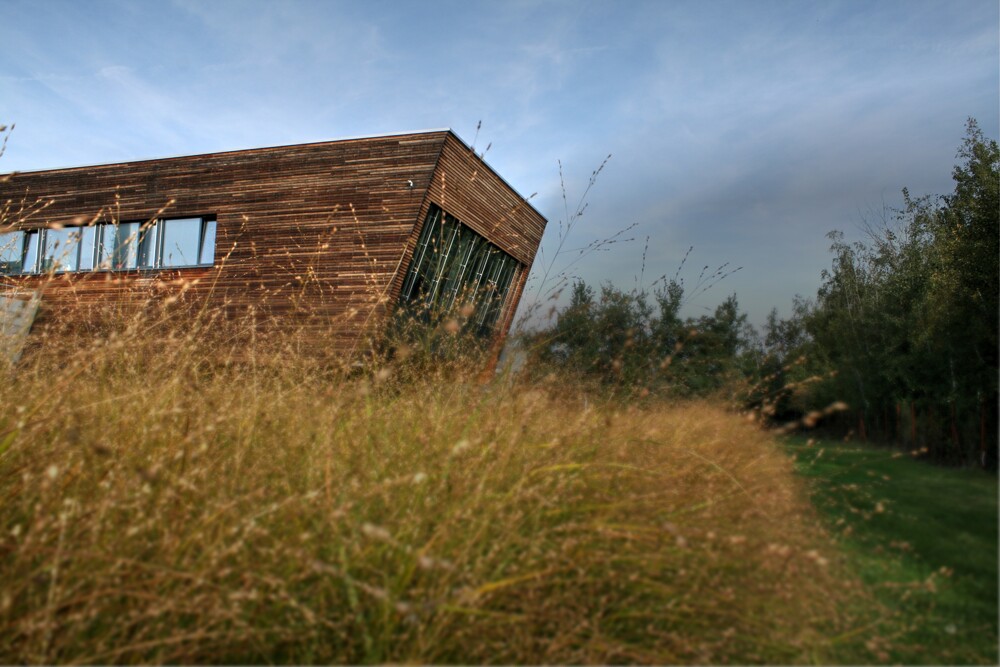
Experiments at UCEEB are typical of real-scale testing, which enables the achievement of reliable information on the functional
parameters of materials, structures, proposed energy systems and intelligent control systems, including their impact on the
quality of the indoor environment of buildings, as well as on the environment environment.
Therefore, an energy system was designed as part of the center, which also serves as an experimental device for research
into the interaction of energy sources with the building itself and with the superior energy network. The design of the building's
energy supply (electricity, heat, cold) was not based on an effort to use the maximum of renewable energy sources "at any
cost", but to effectively use the energy sources absolutely necessary for the purposes of research activities. Renewable energy
sources are represented by an experimental field of photovoltaic panels with a peak power of approx. 35 kWp installed on the
roof of UCEEB.
However, the core of the energy center (energy center) design is a cogeneration gas microturbine with an output of 65 kWe/120
kWt, which can cover fluctuations in the supply of electricity from the photovoltaic system. Another gas microturbine with
an electrical output of 30 kWe serves as a purely experimental one. Two charging stations for electric cars have been installed
on the UCEEB campus.
The composition of other equipment of the energy center depends on the efficient use of the heat produced year-round by the
microturbine. A thermally insulated large-volume pressureless accumulator with a volume of 20 m3 installed underground next
to the building with a turbine and two heat accumulators of 5 m3 in the UT engine room. Each accumulator can be separately
disconnected for experimental use. Two natural gas boilers with a total heat output of 216 kW were installed as a backup heat
source. Back-up cooling of the gas microturbine is provided by dry coolers located on the roof.
In winter, the heat from the microturbine is used to heat the building and prepare the TV. The heat produced by the microturbine
in the summer is used for the preparation of the TV and for cooling the building with a pair of sorption units. It is an absorption
cooling unit with a cooling capacity of 65 kWc and an adsorption cooling unit with a cooling capacity of 9.1 kWc. The cooling
units are switchable for experimental use for solar cooling research. The backup source of cold is a block compressor cooling
unit with a cooling capacity of 262.5 kWc. The absorption unit is operated in a constant mode, the compressor cooling only
meets peak cooling needs. For the cooling system, two cold accumulators of 2.5 m3 are installed. The central cooling sources
(sorption units, compressor unit) serve for the distribution of UCEEB chilled water, needed for some laboratories and for
cooling in the administrative part by means of fan coils.
The Energocentrum is connected by pipelines to the laboratories of the Building Energy Systems team for real-scale experiments.
All devices in the energy center are monitored and evaluated within the superior MaR system, and their operational parameters
(energy production and consumption) are monitored to verify the functionality of the proposed concept and to further optimize
the management of installed energy sources.